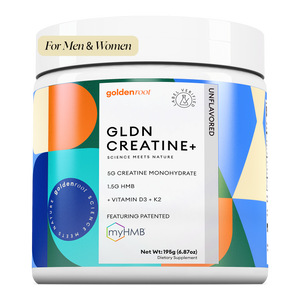More women than ever are turning to creatine, not just for muscle growth, but for strength, endurance, brain support, and overall energy. But once you decide to try it, the next question hits:
Should you choose creatine powder or capsules?
The form you pick can impact convenience, cost, absorption, and how well you stick to your routine. In this blog, we’ll break it all down, no fluff, no bias, so you can decide what works best for you.
What Does Creatine Do for Women?
Creatine helps fuel short bursts of energy, like lifting, sprinting, or HIIT. It enhances your ability to train harder and recover more quickly. For women, creatine is linked to:
-
Increased lean muscle mass
-
Improved strength and endurance
- Faster recovery after intense workouts
Some women worry about water retention or “bulkiness,” but most only experience mild water weight gain inside the muscle, not under the skin. It actually helps muscles look fuller, not puffier.
Regardless of the form, whether powder or capsules, the active ingredient remains creatine monohydrate, and it functions in the same manner in the body.
Read more: The Best Creatine for Women: Top Types, Benefits & Myths Busted
Creatine Powder for Women: Pros and Cons
Pros:
-
Cost-effective, powder is usually cheaper per dose
-
Easy to customize your dose (3–5g is standard)
-
Mixes well in shakes or water
-
Comes in flavored and unflavored options
Cons:
-
May clump if not mixed properly
-
Unflavored versions can taste a bit chalky
- Less convenient on-the-go
Tip: Opt for micronized powder for smoother mixing and reduced grit.
Read more: is creatine safe while breastfeeding
Creatine Capsules for Women: Pros and Cons
Pros:
-
Super convenient, just pop and go
- Tasteless (great if you hate mixing powders)
- Ideal for travel, work, or the gym bag
Cons:
-
More expensive than powder
-
You may need to take 3–6 capsules for a full 3–5g dose
- Less flexible for adjusting your intake
If you hate swallowing pills, this might not be the best option. But for women with busy lifestyles, the grab-and-go factor is a win.
Does Form Affect Absorption or Results?
Here’s the good news that, creatine powder vs. capsules offers no meaningful difference in absorption. Both forms deliver the same creatine monohydrate molecule, and your body uses it the same way.
-
Capsules do dissolve fully in the stomach
-
Micronized powders may absorb slightly faster, but the impact is minimal
- What really matters is consistency
As long as you take it daily, you’ll build up creatine stores in your muscles over time.
Read more: How to Measure 5g of Creatine: Teaspoons, Tablespoons, and Simple Methods That Work!
How to Decide What’s Best for You
Ask yourself:
-
Do I already drink protein shakes or smoothies? → Powder fits right in
-
Do I want zero prep and no mess? → Capsules win
-
Is budget important? → Powder is the cheaper choice
-
Do I hate swallowing pills? → Powder is easier
- Am I always on-the-go? → Capsules are more portable
- There’s no wrong answer, just what fits your routine best.
Tips for Using Creatine (Powder or Capsules)
-
Take 3–5g daily, no need to load
-
Time doesn’t matter much, but many take it post-workout
-
Mix powder with carbs or protein for best absorption
-
Stay hydrated, creatine pulls water into your muscles
Read more: Micronized vs. Monohydrate: Which Creatine Is Best for Women?
Key Takeaway
Whether you’re lifting heavy, doing HIIT, or just chasing energy and strength, creatine can support your goals. Both capsules and powder work equally well, so the choice comes down to what fits your lifestyle.
If you like flexibility and savings, go for powder.
If you want simplicity and portability, capsules are a worthwhile option.
Read more: The Best Creatine for Women: How to Choose the Right One for Your Fitness Goals



